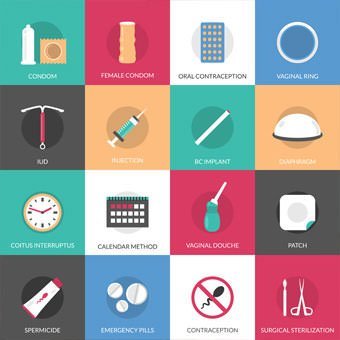In recognition of April as Sexual Assault Awareness Month, HAWC joins survivors and advocates to draw attention to the pervasive issue of sexual violence. Today, we’re talking about a lesser known form of sexual violence: birth control sabotage.
According to the Huffington Post, about half of all pregnancies in the United States are unintended. While many contribute this high statistic to simple carelessness or faulty birth control methods, another small potential culprit is an under-discussed form of abuse called reproductive coercion.
Originally defined in 2010 by Dr. Heather McCauley, a social epidemiologist at Michigan State University, reproductive coercion occurs when abusers try to gain control of survivors by restricting their abilities to make decisions related to reproductive health. This can mean forcing someone to continue an unwanted pregnancy or terminate a wanted pregnancy, limiting someone’s access to reproductive health options, poking holes in condoms or taking condoms off, hiding or throwing away birth control pills, or removing a vaginal ring or IUD. This form of abuse encompasses many other abusive strategies, including emotional manipulation, blackmail, sexual assault, and sabotage.
While the healthcare community has only recently put a name to this phenomenon, one study of women between the ages of 16 and 29 in Northern California shows that is is more common than one might think. This study reports that one in seven women had experienced birth control sabotage, while one in five said that their partners had pressured them to get pregnant (source). With the prevalence of reproductive coercion on the rise, it is important to consider the ways you can protect yourself.
- Assess your relationship and understand the issue. While reproductive coercion is most common in already abusive relationships, it can happen in an otherwise loving relationship too. One in eight women who had never experienced other forms of intimate partner violence reported experiencing reproductive coercion. If you’re not experiencing other forms of abuse, it can be easy to underestimate this manipulation. Remember, a healthy relationship should never make you feel afraid. All decisions about your reproductive health are long-standing and can lead to you bringing another life into the world—at the end of the day, you are the only one who can say if or when it is time to take that step.
- Find a healthcare provider you can trust and use them as a resource. If you’re dealing with any kind of abuse in your relationship, a healthcare provider can help you take action and protect yourself. In the case of reproductive coercion, your healthcare provider might be able to suggest methods of birth control that are more challenging to tamper with, and even a few that your partner might not be able to discover at all.Do your own research about which birth control method might be best for you and your needs. HAWC has compiled a quick list of other potential methods to use if you believe your birth control might be manipulated.
- The Depo-Provera “shot” lasts three months, and one you receive a shot, your partner cannot change it. Of course, because this method is temporary, you will need to be able to access a clinic every three months without arousing suspicion.
- The “implant” is a birth control method that is inserted under the skin of the inside of your upper arm, so your partner wouldn’t notice it unless they were specifically looking for something unusual. More convenient than the shot, the implant lasts up to three years.
- The intra-uterine device (IUD) is placed directly inside your uterus, making it extremely challenging to tamper with or discover. With small strings that can be tucked behind your cervix when placed, a partner shouldn’t be able to notice the IUD during sex, and IUDs typically last between three and six years.
- If you are in a bind, most emergency contraception (EC) can prevent pregnancy up to five days after unprotected sex. The most effective form is Paragard IUD, which continues to protect you from pregnancy for up to 12 years, though you can also access Next Choice One Dose and Ella through a prescription and Plan B One-Step or a generic brand of levonorgestrel-based EC at your local pharmacy without a prescription.
In order to best understand which method might work for you, analyze how you believe your partner might operate. Do they keep track of your menstruation and fertility? Do they have control over your insurance, Medicare claims, or prescriptions? Once you know the answers to these questions, your healthcare provider might be able to decide more readily which option is right for you. For more birth control options, check out this chart by Children By Choice.
- Get outside support. Call HAWC at our 24-Hour Hotline or contact your local domestic abuse organization to learn more about how this experience might be symptomatic of other underlying forms of abuse. Taking control of your life feels overwhelming, but with the help of trained professionals and a network of support, each step becomes easier.
If you are a healthcare provider, there are three easy steps to taking a stand against reproductive coercion and supporting your patients more fully:
- Create safe spaces. Be sure to foster an environment where patients feel comfortable talking to you openly about their concerns. While creating a safe space relies a lot on listening to patients, don’t be afraid to share with patients common markers of healthy and unhealthy relationships so they can assess for themselves.
- Assess your patients. Keep your eyes open for potential red flags, such as a patient frequently requesting pregnancy or STI testing or a patient who has a record of many abortions. Then, do direct assessments using specific questions to ask women about their experiences.
- Connect patients to other resources. As a healthcare provider, you may not be an expert in how to handle domestic abuse. Educate yourself on the various domestic abuse services offered in your area and direct abuse survivors to these resources when relevant.


